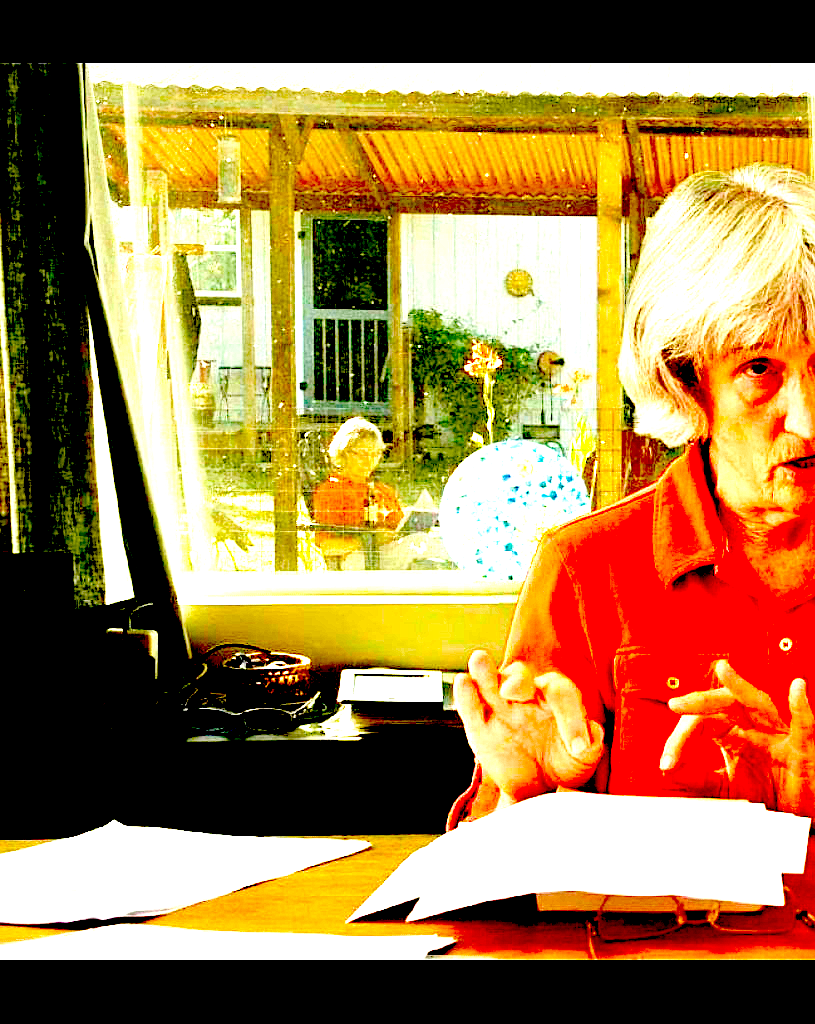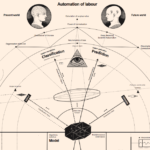
A responsabilidade viral de Haraway (1991, 2016)
Images of the immune system as battlefield abound in science sections of daily newspapers and in popular magazines, for example, Time magazine’s 1984 graphic for the AIDS virus’s ‘invasion’ of the cell-as-factory. The virus is imaged as a tank, and the viruses ready for export from the expropriated cells are lined up as tanks ready to continue their advance on the body as a productive force. The National Geographic explicitly punned on Star Wars in its graphic entitled ‘Cell Wars’ in Jaret’s ‘The Wars Within’ (1986, pp. 708-9). The battle imagery is conventional, not unique to a nuclear and Cold War era, but it has taken on all the specific markings of those particular historical crises. The militarized, automated factory is a favourite convention among immune system illustrators and photographic processors. The specific historical markings of a Star Wars-maintained individuality are enabled in large measure by high-technology visualization technologies, which are also critical to the material means of conducting postmodern war, science, and business, such as computer-aided graphics, artificial intelligence software, and many kinds of scanning systems. (Haraway 1991:224-5)
The infective, invading information fragments that parasitize their host code in favour of their own replication and their own program commands are more than metaphorically like biological viruses. And like the body’s unwelcome invaders, the software viruses are discussed in terms of pathology as communications terrorism, requiring therapy in the form of strategic security measures. There is a kind of epidemiology of virus infections of artificial intelligence systems, and neither the large corporate or military systems nor the personal computers have good immune defences. Both are extremely vulnerable to terrorism and rapid proliferation of the foreign code that multiplies silently and subverts their normal functions. Immunity programs to kill the viruses, like Data Physician sold by Digital Dispatch, Inc., are being marketed. More than half the buyers of Data Physician in 1985 were military. Every time I start up my Macintosh, it shows the icon for its vaccine program – a hypodermic needle. (Haraway 1991:252 nota 4)
Viral Response-ability […] There is no innocence in these kin stories, and the accountabilities are extensive and permanently unfinished. Indeed, responsibility in and for the worldings in play in these stories requires the cultivation of viral response-abilities, carrying meanings and materials across kinds in order to infect processes and practices that might yet ignite epidemics of multispecies recuperation and maybe even flourishing on terra in ordinary times and places. Call that utopia; call that inhabiting the despised places; call that touch; call that the rapidly mutating virus of hope, or the less rapidly changing commitment to staying with the trouble. (Haraway 2016:114)
HARAWAY, Donna. 1991. Simians, cyborgs, and women: the reinvention of nature. New York: Routledge.
__________. 2016. Staying with the trouble: making kin in the Chthulucene. Durham: Duke University Press





 O LaSPA é sediado no Instituto de Filosofia e Ciências Humanas (
O LaSPA é sediado no Instituto de Filosofia e Ciências Humanas (